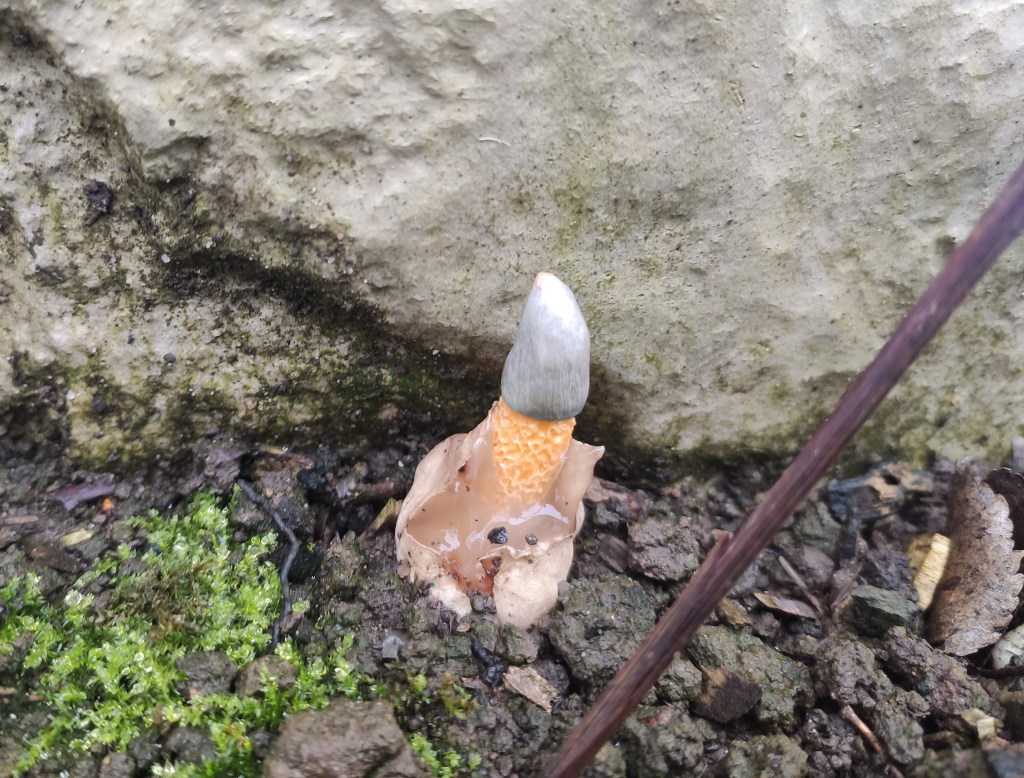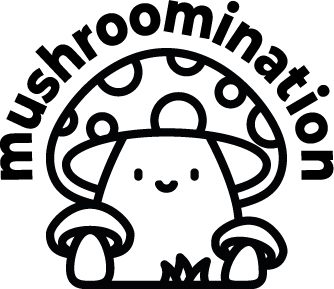
At the end of November I worked remotely from my parents’ lovely house in rural Nottinghamshire. I owe much to my mum for inspiring my interest in mushrooms, she’s really excellent at spotting them and her love for nature in general, is infectious. In their garden, they’ve had some great fungal wonders including Gliophorus psittacinus (Parrot waxcaps), Trametes versicolor (Turkey tail), Crepidotus epibryus (oysterlings), Xylaria hypoxylon (candlesnuff fungus) and Peziza sp.! I tried to time my trip to see the parrot waxcaps but a project in my day job got in my way. However, I was delighted that I could get to see the Mutinus caninus, or dog stinkhorn! It had been on my wishlist for a while.


Like the Common Stinkhorn (Phallus impudicus), Mutinus caninus emerges from an egg, the egg of the Dog Stinkhorn can range from being a pale brown to more white and has a gelatinous pale brown substance inside. It has gleba at the tip, a sticky grey substance, obscuring a darker, red/orange tip, unveiled once flies have been attracted to this and flown away, taking the spores with them. It was interesting to observe superficial changes in the gleba – when it first emerged it was a pale grey, turning to a darker grey with a definite shine, and then within the same day, the gleba had turned more matte, the tip was taken a downturn and more of the red was visible.
They are said to have an unpleasant smell, but less powerful than the common stinkhorn, which can be smelled before they are seen. I didn’t catch any kind of smell from this specimen at all.

The stipe is yellow, hollow and akin to polystyrene, with a distinct wrinkly, furrowed indents. It grows paler and starts to droop with age, eventually disintegrating. Our specimen here looks as if it had some secondary mould on it too, perhaps. This guy was on its own in a flower border, though they are known to grow in little troops, and it was presumably growing from some decayed wood, as they are know to be saprobic. They also grow in deciduous woods. They are most often observed from summer to autumn.


Cate2 holds 1627 records at the time of writing, 1858 – 2022, spread from Scotland to the South of England, with records getting decisively more dense the further south you go.
It was such a privilege to see almost the entire life cycle – the December photographs were supplied by my mum – and observing the changes. Such a fantastical looking organism and is another of my favourite finds this year!
Basic Profile
Scientific name: Mutinus caninus
Common English Name/s: Dog Stinkhorn
Size of fruiting body: 4-8 cm tall, 1 cm wide
Spores: 4-5 x 1.5-2µm
Gills: None
Edibility: Inedible (and unappetising looking!)
Lookalikes: Phallus impudicus – much larger and stipe is white, Phallus hadriani, stipe is white, egg sac has a lilac tinge and is found in sand dunes in the UK (other habitats in other countries).
On the Red Data List (extinct/critically endangered/endangered/vulnerable/near threatened): No
References:
Cate2 Database, managed and maintained by The Fungus Conservation Trust
Mycologos – Online Mycology School run by Peter McCoy
National Biodiversity Data Centre
Red Data List, British Mycological Society
http://iucn.ekoo.se/, The Global Fungal Red List Initiative
Collins Complete Guide to British Mushrooms & Toadstools, Paul Sterry & Barry Hughes, 2009
Mushrooms and Toadstools of Britain and Europe, Edmund Garnweidner, 1994
Mushrooms, Patrick Hardy, 2013
The Encyclopedia of Fungi of Britain and Europe, Michael Jordan, 2004
